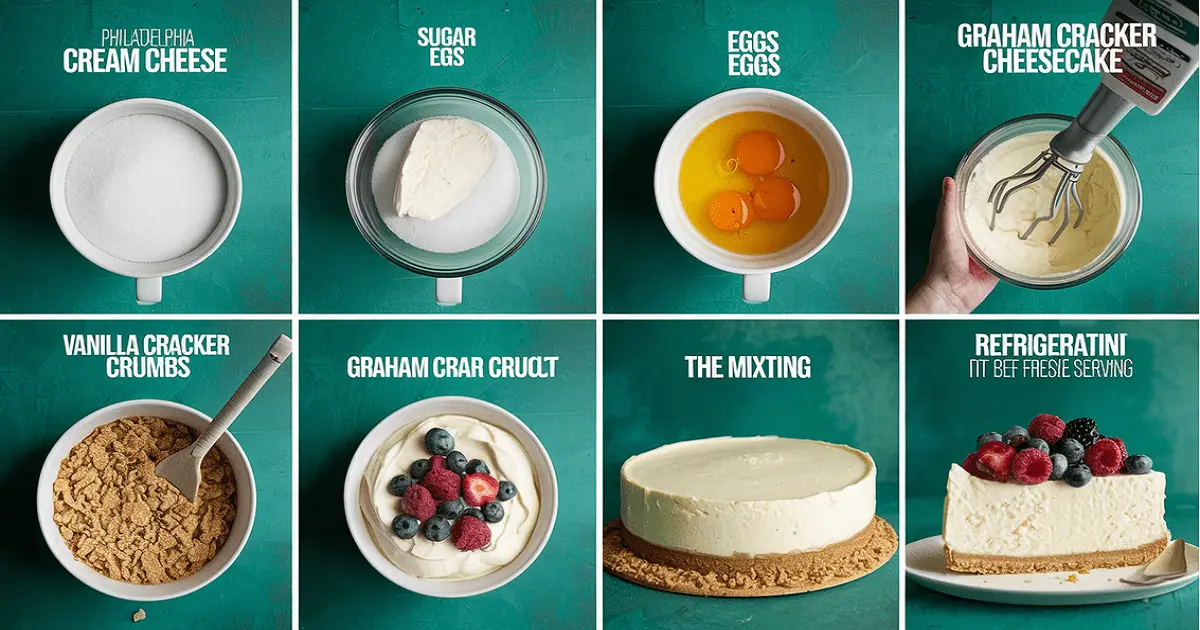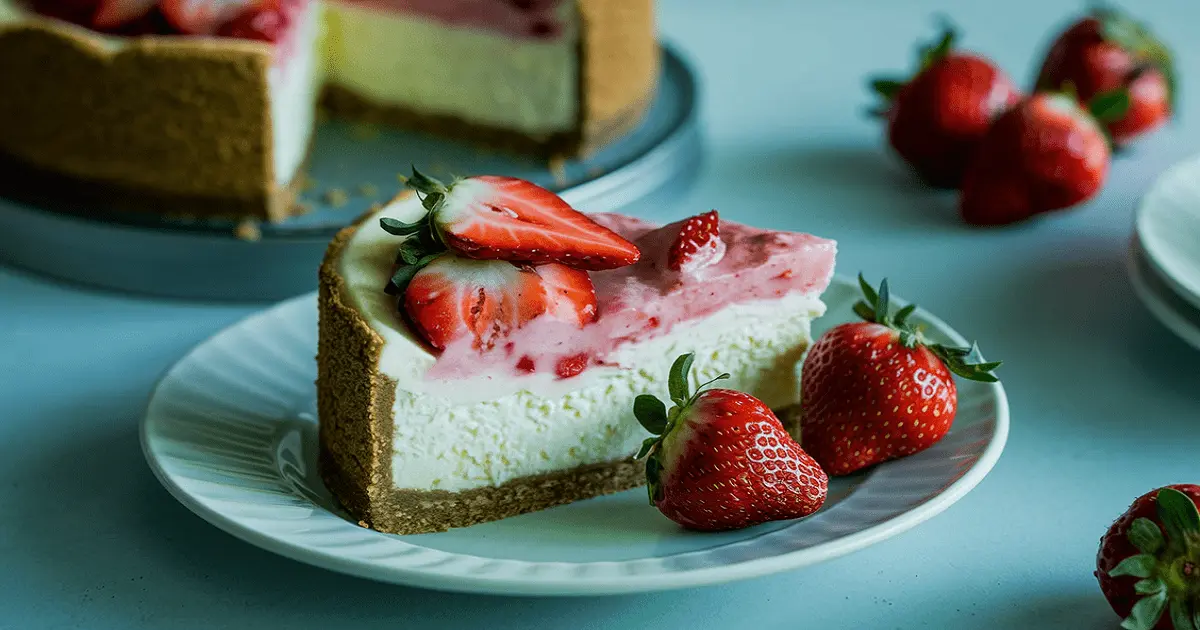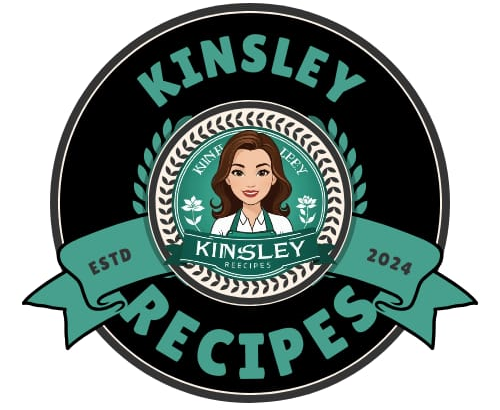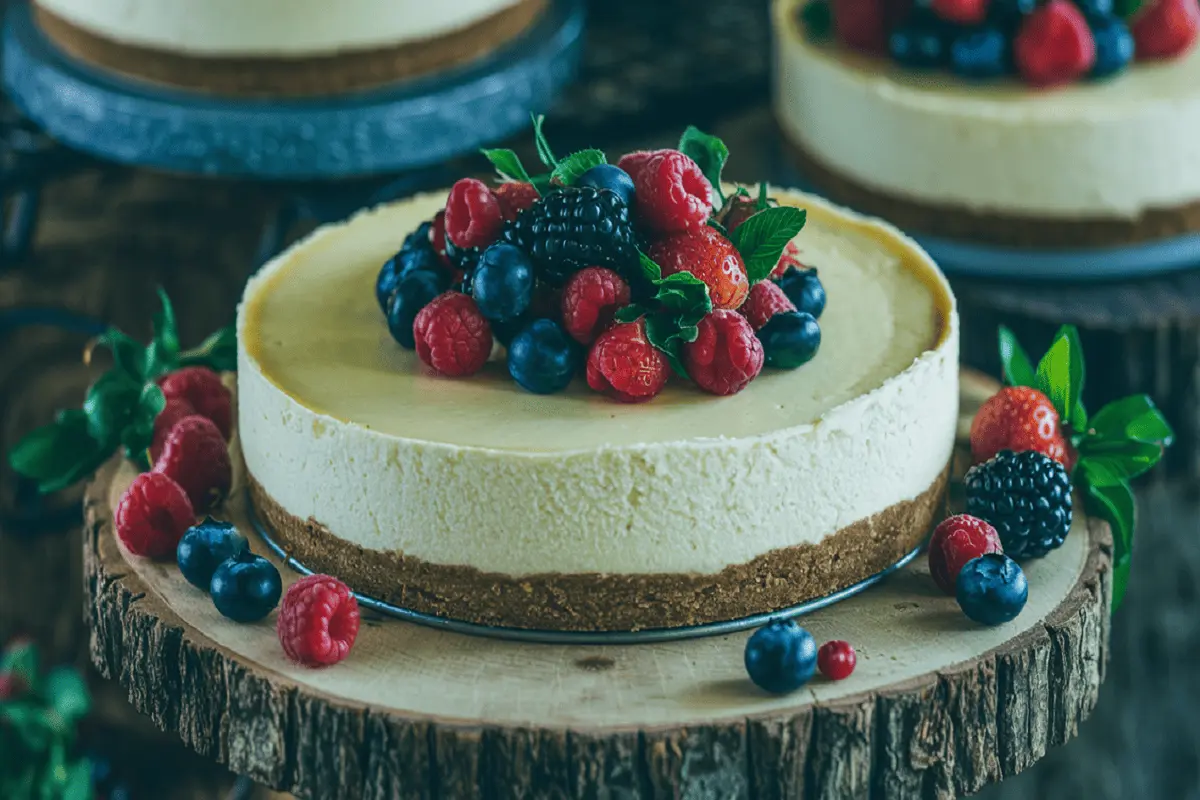Philadelphia cheesecake recipe is a dessert cherished by many for its smooth, creamy texture and rich, indulgent flavor. The secret to this dessert’s popularity lies in its simplicity, which allows the cream cheese to take center stage. Philadelphia cream cheese is the secret to this cheesecake’s distinction, offering a rich texture and a perfectly balanced tangy-sweet flavor. This guide will walk you through every step of making the perfect Philadelphia cheesecake recipe, from selecting the right ingredients to mastering the baking process. Whether you’re a novice baker or an experienced pro, this recipe will help you create a dessert that’s sure to impress and become a family favorite.
What Makes Philadelphia Cheesecake Recipe Unique?
Philadelphia cheesecake recipe is known for its creamy texture and straightforward preparation. Unlike other types of cheesecakes that may require complex techniques, Philadelphia cheesecake is celebrated for its simplicity and ease of preparation. The rich cream cheese filling is the star, delivering a velvety consistency that’s neither too dense nor too light.
Texture and Flavor
The defining characteristic of Philadelphia cheesecake recipe is its smooth texture, which is softer and more silky than the dense and often heavier New York-style cheesecake. The absence of sour cream, which is typically used in New York cheesecakes, results in a lighter, fluffier dessert. Philadelphia cheesecake’s cream cheese base allows it to melt in your mouth, offering a creamy sensation with each bite. This makes it an ideal choice for those who prefer a less dense cheesecake that still delivers rich flavor.
Ease of Baking
Another key advantage of Philadelphia cheesecake recipe is its baking process, which is more forgiving than other cheesecake recipes. The use of simple ingredients and straightforward steps makes it accessible for bakers of all skill levels. Moreover, this cheesecake is less prone to cracking, a common issue that plagues many cheesecake recipes.
Ingredients Overview
The success of a Philadelphia cheesecake recipe lies in the quality of its ingredients. By using the best ingredients available, you ensure that your cheesecake will have the rich flavor and silky texture that this dessert is famous for. Here’s what you’ll need to get started:
Key Ingredients
- Philadelphia Cream Cheese: The cornerstone of this recipe, providing the signature creamy texture and tangy flavor.
- Sugar balances the tanginess of cream cheese by adding the perfect amount of sweetness.
- Vanilla Extract: It enhances the overall flavor profile by adding warmth and depth.
- Eggs: Essential for providing structure to the cheesecake, contributing to its smooth and cohesive texture.
- Graham Cracker Crumbs: Forms the base of the cheesecake, adding a crunchy contrast to the creamy filling.
- Butter acts as a binding agent for graham cracker crumbs, aiding in the creation of a solid and unified crust.
- Optional Flavorings: Lemon zest, chocolate, or various fruits can be added for extra flavor.
Importance of Quality Ingredients
When making a Philadelphia cheesecake, the quality of the ingredients cannot be overstated. For the best results, always use fresh eggs and high-quality cream cheese. Real vanilla extract is preferable to imitation, as it provides a deeper, more authentic flavor. These choices directly impact the final taste and texture of your cheesecake, ensuring that it meets the highest standards of deliciousness.
For those interested in understanding more about how cream cheese plays a role in baking, and why choosing a good brand matters, you might find this detailed guide on cream cheese and its uses in baking enlightening.
Preparing the Crust

The crust forms the base of the cheesecake, offering a delightful textural contrast to the smooth and creamy filling. A well-made crust should be firm, not crumbly, and should complement the filling without overpowering it.
Ingredients for the Crust
- 1 1/2 cups graham cracker crumbs
- 1/4 cup sugar
- 1/2 cup melted butter
Step-by-Step Instructions
- Mix the Ingredients: Begin by combining the graham cracker crumbs, sugar, and melted butter in a medium-sized mixing bowl. Mix the ingredients until the butter evenly moistens the crumbs.
- Press the crumb mixture into the bottom of a 9-inch springform pan.Use the back of a spoon or a flat-bottomed glass to press the mixture firmly and evenly across the bottom of the pan, ensuring there are no gaps or loose crumbs.
- Chill the Crust: Once the crust is formed, place the pan in the refrigerator for at least 15 minutes. Chilling helps the crust set and become firm, preventing it from crumbling when the filling is added.
Variations for the Crust
While the classic graham cracker crust is always a hit, there are several ways to customize it to suit your preferences. For example, adding crushed nuts, like pecans or almonds, to the graham cracker crumbs can introduce a nutty flavor and a satisfying crunch. Alternatively, a pinch of cinnamon or nutmeg can add a warm, spicy note that pairs beautifully with the creamy filling. For more details on creating the perfect crust, you might find this guide on mastering the art of making a graham cracker crust useful.
Making the Cream Cheese Filling
The filling is where the magic of Philadelphia cheesecake recipe happens. Achieving a smooth, lump-free filling is crucial to the texture and overall success of the cheesecake. Here’s how to do it:
Ingredients for the Filling
- 4 packages (8 oz each) Philadelphia cream cheese, softened
- 1 cup sugar
- 1 teaspoon vanilla extract
- 4 large eggs
Step-by-Step Instructions
- Beat the Cream Cheese: In a large mixing bowl, beat the softened cream cheese on medium speed until it becomes smooth and creamy. It’s important to ensure that the cream cheese is at room temperature before you begin, as this prevents lumps from forming in the mixture.
- Add Sugar and Vanilla: Gradually add the sugar to the cream cheese, beating until it’s well combined. Add the vanilla extract and mix thoroughly to ensure even distribution of flavor.
- Incorporate the Eggs: Add the eggs one at a time, beating on low speed until each egg is fully incorporated before adding the next. Be careful not to overbeat the mixture once the eggs are added, as this can introduce too much air and lead to cracks during baking.
Enhancing the Flavor
While the classic recipe is delicious as is, there’s always room for experimentation. For a citrusy twist, try adding a teaspoon of lemon zest to the filling. If you’re a chocolate lover, swirl in some melted chocolate before baking for a decadent treat. These simple additions can transform your cheesecake into a customized dessert that suits your tastes perfectly.
Baking the Cheesecake
Baking the cheesecake is a critical step that requires precision and patience. The goal is to bake the cheesecake evenly and slowly to prevent it from cracking and to ensure a creamy texture throughout.
Baking Instructions
- Start by setting your oven to preheat at 325°F (165°C).. It’s important to let the oven fully preheat before you place the cheesecake inside to ensure consistent baking.
- Prepare a Water Bath: For the best results, bake the cheesecake in a water bath. This involves placing the springform pan inside a larger pan filled with hot water, which should come about halfway up the sides of the springform pan. The water bath helps maintain a consistent temperature around the cheesecake, reducing the risk of cracks.
- Bake the Cheesecake: Place the cheesecake in the preheated oven and bake for 45-55 minutes. You’ll know it’s done when the edges are set but the center still has a slight jiggle. This jiggle will set as the cheesecake cools.
- Cool Slowly: After baking, switch off the oven and leave the door ajar slightly. Allow the cheesecake to cool in the oven for about an hour. This slow cooling process prevents the sudden temperature changes that can cause cracks.
Alternatives to the Water Bath
If you’re not keen on using a water bath, there are alternatives. One option is to bake the cheesecake at a lower temperature (about 300°F or 150°C) for a longer period. This method can also help prevent cracks, but it requires careful monitoring to avoid overbaking. Additionally, placing a pan of water on the oven’s bottom rack can create steam, which helps to keep the cheesecake moist and prevent cracking.
Cooling and Setting the Cheesecake
Once the cheesecake has been baked to perfection, the cooling and setting process begins. This step is crucial to achieving the desired texture and firmness in the final product.
Cooling Instructions
- Cool at Room Temperature: After the cheesecake has cooled in the oven, remove it and allow it to cool completely at room temperature. This guarantees a texture that is both smooth and creamy.
- Refrigerate: Transfer the cooled cheesecake to the refrigerator, where it should be chilled for at least 4 hours, but preferably overnight. This chilling period allows the cheesecake to firm up and makes slicing easier.
- Loosen the Cheesecake: Before serving, run a knife around the edge of the cheesecake to loosen it from the sides of the springform pan. This step ensures that the cheesecake releases cleanly when the pan is removed, preserving the smooth edges.
Importance of Patience
It’s tempting to dive into your cheesecake as soon as it’s baked, but patience is key. Allowing the cheesecake to cool and set properly is essential for achieving the perfect texture. Rushing this process can result in a cheesecake that’s too soft or difficult to slice cleanly. By taking your time, you’ll be rewarded with a dessert that not only looks beautiful but tastes incredible.
Philadelphia Cheesecake Recipe Variations

While the classic Philadelphia cheesecake is a crowd-pleaser on its own, there are countless ways to customize it to suit different tastes and occasions. Here are some popular variations:
Fruit Toppings and Swirls
- Fresh Berries: Add a topping of fresh strawberries, blueberries, or raspberries to your cheesecake for a burst of color and natural sweetness. The juxtaposition of tart berries with the smooth, creamy cheesecake creates an irresistible combination.
- Fruit Swirl: For a marbled effect, swirl a fruit puree, such as raspberry or blueberry, into the cheesecake batter before baking. This enhances both the flavor and the visual appeal.
Chocolate Variations
- Chocolate Swirl: Melt some chocolate and swirl it into the cheesecake batter before baking. The result is a rich, chocolatey cheesecake with a beautiful marbled appearance.
- Chocolate Crust: Substitute chocolate graham crackers for the crust to add an extra layer of flavor. This is especially delicious when paired with a chocolate swirl filling.
Nut and Spice Additions
- Nut Crust: Incorporate finely chopped nuts, such as pecans or walnuts, into the crust for added texture and a nutty flavor.
- Spiced Cheesecake: Add a pinch of cinnamon or nutmeg to the cheesecake batter for a warm, spiced flavor that’s perfect for fall or winter desserts.
These variations allow you to tailor your cheesecake to your specific preferences, making it a versatile dessert that can be enjoyed year-round.
Serving and Presentation Tips
Presentation is just as important as taste when it comes to serving cheesecake. A beautifully presented cheesecake not only looks appetizing but also enhances the overall dining experience.
Slicing the Cheesecake
- Use a Hot Knife: For clean, professional-looking slices, dip your knife in hot water and wipe it dry before each cut. This technique prevents the cheesecake from adhering to the knife, resulting in smooth, uniform slices.
- Clean the Knife Between Slices: Use a damp cloth to wipe the knife after every cut. This keeps the edges of each slice looking neat and prevents crumbs or filling from transferring between slices.
Serving Suggestions
- Garnishing: Enhance the presentation of your cheesecake with garnishes like fresh berries, a drizzle of caramel or chocolate sauce, or a dollop of whipped cream. These simple additions can elevate the look and taste of your dessert.
- Plating: Serve the cheesecake on a chilled plate for a more refined presentation. The contrast of the cool plate with the rich, creamy cheesecake adds to the overall dining experience.
Storing Leftovers
If you have any leftovers, proper storage is essential to maintaining the cheesecake’s quality:
- Refrigeration: Keep the remaining cheesecake in a sealed container in the fridge. It should remain fresh for up to five days.
- Freeze for Later: Cheesecake also freezes beautifully. To freeze individual slices, first wrap them in plastic wrap, then store them in a container that is safe for freezing. Cheesecake may be stored in the freezer for up to three months. To enjoy, simply thaw the slices in the refrigerator overnight.
By following these tips, you’ll ensure that every slice of your cheesecake is as delicious and visually appealing as the first.
FAQs

What is the Difference Between New York Cheesecake and Philadelphia Cheesecake?
New York cheesecake is known for its dense, rich texture, which is achieved by adding ingredients like sour cream or heavy cream. It’s typically baked at a higher temperature, which contributes to its signature thickness and sometimes slightly browned top. In contrast, Philadelphia cheesecake is lighter and creamier, focusing on the smooth texture provided by the cream cheese. The absence of additional heavy ingredients makes it less dense and more silky.
What is the Secret to the Best Cheesecake?
The secret to the best cheesecake lies in attention to detail. Use high-quality, room-temperature ingredients to ensure a smooth batter. Mixing the batter until just combined prevents overmixing, which can introduce too much air and cause cracks. Baking slowly at a low temperature, ideally in a water bath, helps the cheesecake cook evenly without drying out. Finally, allowing the cheesecake to cool gradually and fully set in the refrigerator ensures a perfect texture.
What is in Philadelphia Cream Cheese Filling?
Philadelphia cream cheese filling typically consists of cream cheese, sugar, vanilla extract, and eggs. These ingredients are blended to create a smooth, rich filling that is the hallmark of classic cheesecake. Some variations may include lemon zest or other flavorings to add depth and complexity to the filling.
Can You Use Philadelphia for Baking?
Absolutely! Philadelphia cream cheese is ideal for baking, offering a creamy texture and consistent quality that enhances both sweet and savory dishes. Its versatility makes it a popular choice not just for cheesecakes, but also for frostings, dips, and stuffed baked goods. Its rich flavor and smooth consistency make it a go-to ingredient for many bakers.
Conclusion
Creating the perfect Philadelphia cheesecake recipe is a rewarding experience that results in a dessert that’s as impressive as it is delicious. By following these steps, you’ll master the art of cheesecake making, ensuring a creamy, smooth, and satisfying dessert every time. Whether you stick to the classic recipe or experiment with variations, this cheesecake is sure to become a favorite in your household. Happy baking!
For more inspiration and tips, check out the Kinsley Recipes Desserts Collection for additional ideas and variations.

